The Yellow Dog River, part of which is designated a National Wild and Scenic River, is located near Lake Superior. Concerned citizens say a new mineral lease application by Eagle Mine could jeopardize its water quality. (Keweenaw Now file photo)
MARQUETTE -- The Eagle Mine LLC, currently owned by international mining conglomerate Lundin Mining, is seeking a new mineral lease from the State of Michigan for 40 acres of land (NE 1/4 SE 1/4, Section 13, T50N, R29W, Michigamme Township, Marquette County) beside the Yellow Dog River, a federally-recognized National Wild and Scenic River with a status of "excellent" water quality.
This map shows the area of the mineral lease (40 acres) requested by Eagle Mine. A recreational trail runs through the parcel. The Yellow Dog River is just south of it. (Map courtesy savethewildup.org)
According to documents obtained by grassroots organization Save the Wild U.P. (SWUP), Michigan's Department of Natural Resources (DNR) has known about this application since July.* The DNR's announcement of Lundin Mining’s mineral rights lease application was first published on Monday Oct. 20, 2014, commencing a legally-required 30-day public comment period.**
SWUP recently found that just one month after Lundin’s Eagle Mine submitted the July 9, 2014, letter of interest to Michigan's DNR, the DNR Fisheries Division's 2003 recommendation of "Non-development" was changed to "Development, with no restrictions" -- in August of this year.
As SWUP indicated in their Oct. 22, 2014, article, restrictions were added.
SWUP notes, "DNR retains restrictions on the property for a recreational trail, endangered plants, and 'neotropical migrants' including Kirtland’s warbler."***
According to Karen Maidlow, DNR property analyst in Minerals Management, "In September 2014, DNR Field Staff and the State Historical Preservation Office reviewed the parcel for lease classification. Based on the field review, the recommended classification is Leasable Development with Restrictions. The restrictions are Limited Surface Disturbance, Recreational Trails, and Threatened and Endangered Species Habitat." ****
DNR corrects public notice: lease to include restrictions
A corrected public notice, including the lease classification, "development with restrictions," was published today, Oct. 31, 2014, since the notice in the Marquette Mining Journal on Oct. 20 did not include that classification. The new 30-day public comment period has a deadline of Dec. 1, 2014.*****
According to an earlier notice included in a document sent to Save the Wild U.P., "A development with restrictions classification allows for use of the surface for metallic mineral exploration, development, or production under specific lease conditions and stipulations."**
Three stipulations (restrictions) are listed to be included in this lease:
15:
To limit surface disturbance, any wells to be drilled on the leased premises shall be drilled from a single surface area that is acceptable to and approved by the Lessor. The Lessee shall submit a proposed development plan for the leased premises including a proposed surface area, access routes and pipeline corridors, with due regard to surface features, the relative location of other operations in the area, and applicable regulatory requirements. The Lessee may not drill any well on the leased premises without first obtaining an approval from the Lessor. Approval shall not be unreasonably withheld. If Lessor reasonably determines that production on adjacent land creates the probability of drainage of oil and/or gas from State mineral land, additional surface locations may be considered.
16:
All other provisions of this lease notwithstanding, it is understood that no exploration or development work shall be conducted on this parcel without specific authorization from the Department of Natural Resources, Wildlife Division. No operations shall be conducted until written instructions for the proper protection of any threatened or endangered species or their habitat are issued.
19:
All other provisions of this lease notwithstanding, it is understood that no well site shall be located closer than 660 feet to any recreational trail without obtaining the written consent of the Lessor and contacting the local Department trails coordinator.******
The mineral rights lease does allow for exploration and development.
Maidlow told Keweenaw Now any development work would require more than the lease. Permits would be required, e.g., from the Department of Environmental Quality and, if necessary, from local units of government.
"Our lease is for the metallic mineral rights. It's not a surface use lease," Maidlow said. "They have the right to use the surface, but not to put a facility on the surface."
Dan Blondeau, Eagle Mine senior advisor, Communications and Media Relations, said Lundin Mining Co. has applied for this mineral lease in order to do exploration, in particular, geophysical studies.
"The sale of Eagle included land and mineral rights within a roughly 8 mile by 3 mile block," Blondeau said. "However, the purchase did not include every parcel within that area. This lease would help us fill-in gaps (of mineral rights) inside the block."
However, Blondeau added that Eagle has only applied for the lease of the 40-acre parcel. They do not yet have a plan for exploration activities there.
"As part of our commitment to the community, we continue to explore for mineral resources," Blondeau said. "Exploration conducted in accordance with this lease would help us better understand the geology near the Eagle Mine."
Eagle Mine also has a metallic mineral lease (Lease number 595, 482.12 acres) in Section 18, in Champion Township, to the east of the 40-acre parcel in Section 13.
This map shows parcels leased from the State of Michigan in Section 18 (dark green), east of and contiguous to the 40-acre parcel in Section 13. Eagle Mine holds a metallic mineral lease on 482.12 acres in Section 18 (Lease number 595). They also hold a Department of Environmental Quality (DEQ) Wetlands permit for exploration in some sections of Michigamme Township (blue markings north and south of Yellow Dog River represent wetlands -- see below). To see more details of this area go to the DNR's GeoWebFace map. Move the map to the general area; then, by checking items to the left of the map, you should be able to see the location of the Eagle Mine, the Yellow Dog River, DNR ownership, lease numbers, etc. (Map courtesy Karen Maidlow of DNR)
Keweenaw Now was not able to determine whether Lundin is doing exploration in Section 18.
"Due to market sensitivities we do not divulge specific exploration information," Blondeau said.
Eagle Mine would not do exploration without permission of the rightful property owner, he added.
Eagle Mine has both a surface lease and a metallic mineral lease on the nearby Section 12, where the present Eagle Mine facilities are located. The facilities appear to be about a mile or a mile and a half from the Section 13 parcel.
SWUP, concerned residents, oppose lease request
Save the Wild U.P.’s president Kathleen Heideman is outraged about the lease request because of the proximity of the Yellow Dog River.
During a brief talk preceding the Oct. 25, 2014, benefit concert by folk/jazz singer-songwriter Claudia Schmidt (center), Kathleen Heideman, Save the Wild U.P. (SWUP) president (right), speaks about the recent mineral lease application by Eagle Mine that could impact the nearby Yellow Dog River. At left is Linda Rulison, Friends of the Land of Keweenaw (FOLK) president, who spoke about FOLK's concerns for "places too special to mine," illustrated in the bulletin board of photos at right. The concert, a benefit for both SWUP and FOLK, attracted a large turnout, filling the Orpheum Theater in Hancock. (Photo by Keweenaw Now)
"It’s alarming that the State of Michigan is seriously considering this mineral lease request," Heideman said. "The land in question is only one hundred feet from the Yellow Dog River’s 100-year floodplain, which means the land is vulnerable to extreme flooding events (King and MacGregor Environmental, Inc., 2011). For me, that’s a giant neon sign spelling R-I-S-K-Y: sulfide ore and water are a dangerous mix! Also, the DNR’s Wildlife staff identified the land as habitat for the Kirtland’s Warbler, a state and federally listed Threatened and Endangered species."
In a recent press release / article on their Web site, SWUP encourages concerned citizens to demand a public hearing and a transparent, democratic evaluation of the proposed lease.***
However, according to Maidlow, the DNR would not hold a public hearing on a mineral rights lease. The Michigan Department of Environmental Quality (DEQ) would coordinate a public hearing if the mining company submits a plan for a mining permit. The DNR would attend the hearing since state land is involved.
Joe Maki, DEQ mining specialist, said Eagle Mine has not applied for any mining permits outside of those they have for the existing Eagle Mine.
"This new parcel (subject of the lease request) is not included in any mining permitted activity that Lundin has right now," Maki said. "If an ore body was identified in that area and they wanted to mine that deposit, then mining permits would be required and a public hearing would be included."
The DEQ has in the past held public information meetings before a mining permit application is received, but such a meeting would not be considered a public hearing, he explained.
"Unless they apply for a permit, we don't hold a public hearing," Maki added.
Cynthia Pryor of the Yellow Dog Watershed Preserve, a resident of the watershed and and dedicated environmental watchdog, warned that additional mining would threaten the Yellow Dog River's water quality.
Cynthia Pryor of Yellow Dog Watershed Preserve speaks about water quality during the question session preceding the March 25, 2014, DEQ Public Hearing on re-issuance of the Groundwater Discharge Permit for the Eagle Mine near Big Bay, Mich. The mine is now operational. (File photo © and courtesy Jeremiah Eagle Eye)
"Mining activity on this land poses a direct threat to the Yellow Dog River: land disturbance, drilling contamination, groundwater impairment, surface water pollution, you name it," Pryor said. "The DNR needs to reconsider their classification of the property's restrictions. Given the river’s proximity, this land is absolutely too sensitive to allow mining development."
Attorney Michelle Halley is not surprised by Lundin's application to lease more minerals.
During the March 25, 2014, DEQ Public Hearing on re-issuance of the Groundwater Discharge Permit for the Eagle Mine, attorney Michelle Halley speaks about the need for a (federal) Clean Water Act permit for Eagle Mine. (File photo © and courtesy Jeremiah Eagle Eye)
"Save the Wild U.P., the Yellow Dog Watershed Preserve, and others have known that Eagle Mine is just the beginning of a regional mining development strategy," Halley noted. "In the long term, the public will pay a high price for mining projects performed with inadequate permitting, monitoring and enforcement."
According to SWUP Director Alexandra Thebert, "Leasing mineral rights means drilling, and drilling can quickly lead to a new mine. We must ensure that the enormous liability of mining on State-owned land isn’t a burden shifted to taxpayers while increasing the profits of a foreign mining company."
Alexandra Thebert, Save the Wild U.P. director, speaks about the Eagle Mine at the Amnesty International offices in London, England, on Apr. 15, 2013. She also spoke during former Eagle Mine owner Rio Tinto's Annual General Meeting (AGM) for shareholders in London on Apr. 18, 2013. (File photo © Amy Scaife and courtesy Save the Wild U.P.)
As for exploration drilling, it does not need an actual Part 632 mining permit at the exploration stage, but the company has to follow DEQ rules under Part 625, the Mineral Well Act.
According to Melanie Humphrey, geological technician in the DEQ Marquette Office, these rules for exploratory drilling require the company to file a report (drill logs). Humphrey also inspects the drilling sites.
Humphrey noted the company would need to have the lease and then submit an exploration plan to the DNR before her DEQ office could make comments on their plan.
"I haven't had any notification or anything about drilling in that area," she said.
Eagle Mine holds permit for wetland exploration
Eagle Mine does hold a DEQ General Permit for seismic survey exploration activities under Part 303 Wetlands Protection (of NREPA, the Natural Resources Environmental Protection Act, 1994, PA 451 as amended). The permit, issued Aug. 21, 2014, is for properties in Michigamme Township (Marquette County): T50N, R29W, Sections 3, 10, 11, 12, 13, 14.
The permit authorizes the following exploration activities: "Complete seismic exploration survey in wetlands. This includes completion of 4" diameter x 10' deep (max) hand-augured borings and associated firing of 354-g charges in wetlands, resulting in a total, overall wetland 'dredge' and subsequent fill volume of 38.0 cu. yds. over a total area of 102.6 sq. ft."
"All the work is going to be completed by hand and on foot," said Virginia (Ginny) Pennala, DEQ Water Resources Division, Marquette Office.
The permit also includes conditions for protecting a state threatened species, Narrow-Leaved Gentian (Gentiana linearis) and nesting migrant birds in the area.
Jon Saari, SWUP vice president, points out that these public lands belong to the public and adjoin an even larger area of public land.
"This is not an isolated parcel of surplus land," Saari said. "It adjoins another 840 acres of contiguous State Land on the Yellow Dog Plains."
Gene Champagne, Concerned Citizens of Big Bay, sees a pattern of deception and creeping industrialization of the Yellow Dog Plains.
Gene Champagne of Concerned Citizens of Big Bay speaks about local residents' concerns during the March 25 DEQ Public Hearing on re-issuance of the Ground Water Discharge Permit for Eagle Mine, which is located near Big Bay, Mich. (Keweenaw Now file photo)
"Clearly, mineral leasing leads to surface operations -- and the land under consideration in this proposed mineral lease is only half a mile from the freshly-paved Triple A road," Champagne noted. "We renew our call for a federal corruption investigation concerning the State’s failure to regulate Eagle Mine, fraudulent permitting, bait-and-switch electrical infrastructure, the steamrolling of road upgrades, and total disregard for cumulative environmental impacts."
SWUP encourages concerned citizens to send comments to Karen Maidlow, Property Analyst, Minerals Management, Michigan Department of Natural Resources, at maidlowk@michigan.gov, while copying info@savethewildup.org, since the organization is maintaining an independent analysis of comments received. Comments regarding the mineral rights lease can also be mailed directly to Karen Maidlow, Property Analyst, Minerals Management, DNR, P.O. Box 30452, Lansing, MI 48909.
Notes:
* Click here and see the July 9, 2014, letter from Eagle Mine to MDNR on p. 1 of the document.
** Click here for the notice included in this document on p. 7. The public notice published in the Marquette Mining Journal on Oct. 20, 2014, is slightly different. It did not include the paragraph on "development with restrictions."
*** Click here and see the comments concerning restrictions on p. 3 of the document.
Click here for the article by Save the Wild U.P.
**** According to Karen Maidlow, DNR property analyst in Minerals Management, each division is responsible for reviewing the parcel for lease classification based on their field of expertise. She explains the review as follows: "Although Fisheries Division review was development, the Field Coordinator takes all the comments from all the reviewers to determine a final classification (the official recommended classification), which occurred in September. The official recommended classification is Development with Restrictions. The classification did NOT change from August to September. The reviewers are given time to do their review and only when all reviewers have completed the review does the field coordinator determine the final classification. This did not occur until September."
***** Click here for the Corrected Public Notice.
****** Text of stipulations courtesy Karen Maidlow of DNR.
























































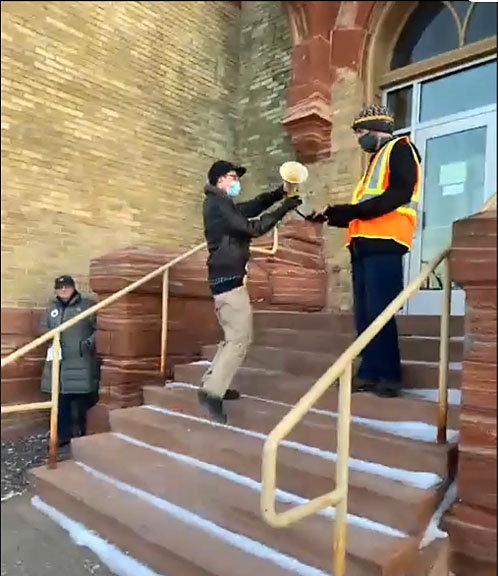




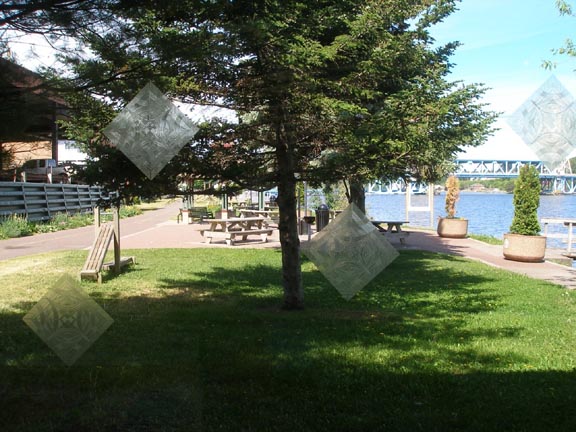









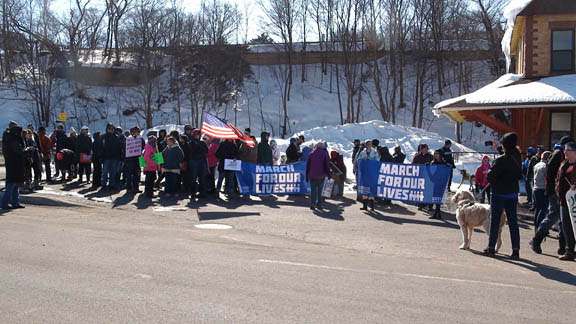


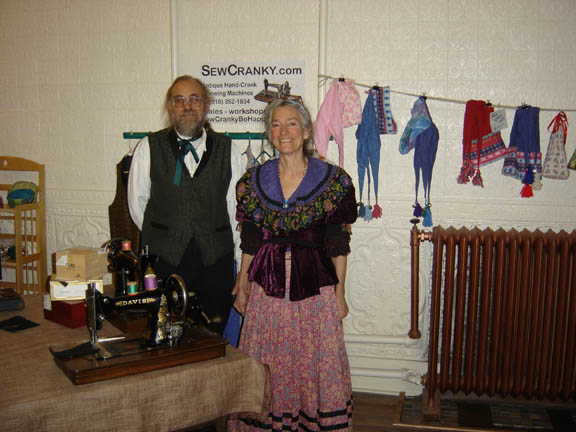














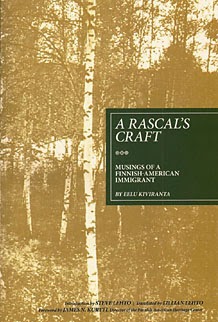
















No comments:
Post a Comment